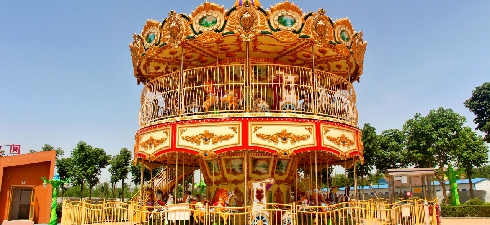- Albanian
- Arabic
- Belarusian
- Bengali
- Czech
- English
- French
- German
- Hebrew
- Hungarian
- Indonesian
- irish
- Italian
- Japanese
- kazakh
- Persian
- Russian
- Thai
- Uzbek
- Vietnamese
roller coaster project materials
The Thrills of Roller Coaster Project Materials
Roller coasters, those thrilling giants of amusement parks, are not just a source of adrenaline for riders; they are also engineering marvels that blend creativity, physics, and safety. Building a roller coaster involves meticulous planning, a deep understanding of material properties, and the implementation of cutting-edge technology. This article will delve into the various materials used in roller coaster construction, their properties, and their significance in ensuring a safe and exhilarating ride.
The Backbone Steel and Wood
The primary materials used in roller coaster construction are steel and wood, each offering unique advantages and challenges. Steel coasters, one of the most common types, are favored for their durability and design flexibility. Manufacturers typically use high-strength steel, as it provides excellent tensile strength and can withstand the immense forces exerted during operation. Steel is particularly beneficial for high-speed rides and inversions, as it allows for smoother transitions and tighter curves.
On the other hand, wooden coasters exude an old-school charm with a retro feel. They are constructed from timber, often treated for weather resistance and strength. While wooden coasters may not achieve the same heights or speeds as their steel counterparts, they offer a distinctive ride experience marked by whooshing and rattling sounds, which many enthusiasts cherish. The choice between wood and steel often depends on the desired ride experience, location constraints, and budget considerations.
Advanced Materials and Technologies
In recent years, roller coaster designers have begun experimenting with advanced materials to enhance performance and safety. For instance, fiberglass is increasingly used in coaster elements, including car bodies and track segments. Fiberglass is lightweight, corrosion-resistant, and can be molded into complex shapes, allowing for innovative designs that were previously impossible.
Moreover, composite materials, which combine fibers with resin, have gained popularity due to their high strength-to-weight ratio. Composites are used in components that require both durability and lightness, significantly enhancing the ride experience while reducing structural load on support beams.
roller coaster project materials

Safety Considerations
The choice of materials is not solely about performance and aesthetics; safety is paramount in roller coaster design. Engineers must consider various factors, including load-bearing capacity, fatigue resistance, and environmental impact. For instance, the materials used must endure extreme weather conditions, vibrations, and potential collisions during operation.
Regular maintenance and inspections are crucial to ensure the longevity and safety of the coaster. The materials selected must facilitate easy monitoring for signs of wear and tear. Therefore, many parks invest in smart technologies that incorporate sensors to track stress levels and structural integrity in real-time, allowing for timely repairs and maintenance.
Sustainability and Environmental Impact
With an increasing focus on sustainability, many modern roller coaster manufacturers are seeking eco-friendly materials and practices. Reclaimed wood is one such material, used to minimize environmental impact while retaining the natural aesthetics of wooden coasters. Likewise, manufacturers are exploring energy-efficient construction methods and renewable resources.
Additionally, the recycling of materials at the end of a coaster's life cycle is becoming more prevalent, with some parks opting to repurpose components for new rides or other attractions. This commitment to sustainability not only addresses environmental concerns but also appeals to a growing demographic of eco-conscious consumers.
Conclusion
The materials used in roller coaster construction play a crucial role in defining the ride experience, ensuring safety, and addressing environmental challenges. As technology advances, the opportunities for innovation within this field continue to expand. With the right combination of materials and engineering expertise, the thrill of roller coasters will undoubtedly continue to captivate audiences, pushing the boundaries of design and excitement for generations to come. Whether wooden or steel, every coaster tells a story, and understanding its materials deepens our appreciation for this exhilarating form of entertainment.
-
Flume Ride-Hebei Zhipao Amusement Equipment Manufacturing Co., Ltd.|Thrilling Water Attraction&Customizable DesignJul.30,2025
-
Flume Ride - Hebei Zhipao Amusement Equipment | Water Coaster, Thrilling DescentJul.30,2025
-
Flume Ride - Hebei Zhipao | Thrilling Water AttractionJul.30,2025
-
Flume Ride: Thrilling Water Attraction by Hebei Zhipao|Log Flume Manufacturers&Flume Ride DesignJul.30,2025
-
Flume Ride-Hebei Zhipao Amusement Equipment Manufacturing Co., Ltd.|Thrilling Water Coaster, Safe DesignJul.30,2025
-
Flume Ride-Hebei Zhipao Amusement Equipment Manufacturing Co., Ltd.|Thrilling Water Attraction, Safe DesignJul.30,2025
